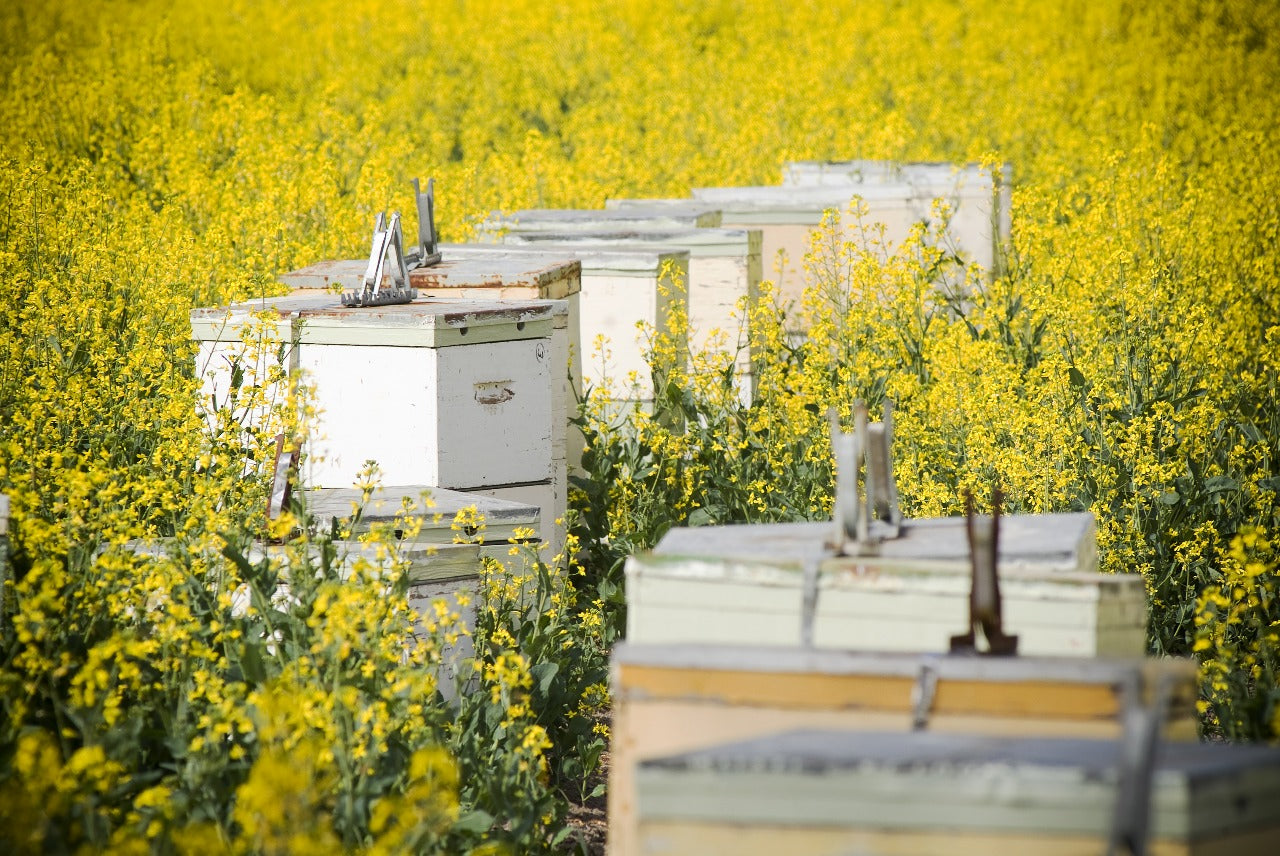Beekeepers often face the challenge of managing weak or struggling colonies, but one effective solution is combining honeybee colonies. This method not only strengthens the overall hive but also promotes long-term health and sustainability. By merging colonies, beekeepers can ensure their bees have the resources and strength to thrive, especially during tough seasons like winter.
Let’s explore the benefits of combining honeybee colonies and how this practice can significantly improve hive health.
Boosts Hive Productivity
Combining weak and strong colonies can dramatically increase hive productivity. A larger population means more foraging power, which leads to higher honey yields. With more bees available to gather nectar and pollen, the hive can efficiently produce more honey, benefiting both the bees and the beekeeper.
Additionally, when colonies are combined, bees can focus on what they do best—building honey reserves and expanding the brood. The overall productivity of the hive skyrockets, which is especially important during the peak honey flow seasons.

Strengthens Colony Defense
A larger colony is naturally better equipped to defend itself against common threats like wax moths, small hive beetles, and even robbing from other bees. By combining colonies, beekeepers strengthen the hive’s defense mechanisms, making it harder for pests to infiltrate and cause damage.
A strong, unified colony also ensures better protection of brood, honey stores, and the queen. This enhanced defense reduces the risk of losing valuable resources to predators or diseases, keeping the hive safe and secure.
Promotes Efficient Resource Sharing
When honeybee colonies are combined, resource sharing becomes much more efficient. A struggling colony often cannot gather enough nectar or pollen to sustain itself, but by merging it with a stronger one, both colonies can share food stores, brood care responsibilities, and general hive maintenance.
This balanced approach allows the bees to use their energy more efficiently, leading to better hive health. For instance, more bees mean quicker wax production, better brood incubation, and faster honey curing—all of which are crucial for the hive’s well-being.
Improves Queen's Egg Laying Potential
The queen bee is the heart of any hive, and her productivity is vital for a healthy colony. By combining honeybee colonies, the queen is provided with a larger workforce, which supports her egg-laying efforts. With more worker bees to care for the brood, the queen can lay eggs at an optimal rate, increasing the colony's population and ensuring its growth.
In a merged colony, the queen’s egg-laying potential is maximized, which leads to a thriving, robust hive that can handle the demands of brood care, honey production, and hive expansion.
Reduces the Risk of Colony Collapse
Colony collapse disorder (CCD) remains a concern for beekeepers, but combining weak colonies can help mitigate this risk. Weak colonies are more vulnerable to disease, pests, and environmental stress, but when they are combined with stronger colonies, the overall hive strength increases, reducing the likelihood of collapse.
A unified colony can better withstand external pressures, maintain a healthy internal environment, and continue functioning without succumbing to stress factors that often lead to collapse.
Better Winter Survival Rates
One of the most significant benefits of combining honeybee colonies is improving their chances of surviving winter. A larger, more robust colony can maintain the necessary warmth and resources to make it through the colder months. With more bees to generate heat and share food stores, the chances of survival increase dramatically.
By combining colonies before winter, beekeepers ensure that the hive enters the season with the strength needed to endure the harsh conditions. This leads to better overwintering success and healthier bees in the spring.
Enhances Hive Health
Overall, combining honeybee colonies promotes better hive health. It allows the bees to pool their resources, defend against threats, and support the queen’s productivity. Beekeepers can manage issues more effectively and ensure that their hives remain strong, vibrant, and capable of thriving throughout the year.
The merging of colonies can also address issues like queenlessness or dwindling populations, providing a practical solution to common hive health challenges. In the long run, combining colonies can lead to a more sustainable, successful beekeeping operation.
Best Beekeeping Suits and Beekeeping Kids Suits by OZarmour
At OZarmour, we understand that protecting both beekeepers and young enthusiasts is essential for successful beekeeping. Our collection, Best Beekeeping Suits , Beekeeping Gloves, Beekeeping Veils, Beekeeping Trousers, Beekeeping Suits For Kids, Pink Beekeeping Apparels, Tools & Accessories and Beekeeping Kids Suits, is designed with safety, comfort, and durability in mind. These suits offer full protection from stings while allowing maximum breathability, perfect for long hours in the hive. Whether you're combining colonies or performing routine inspections, our suits provide peace of mind for beekeepers of all ages. With high-quality materials and designs tailored to fit both adults and children, OZarmour ensures you and your little beekeepers stay safe and comfortable in every season.

Conclusion
In conclusion, combining honeybee colonies is an effective strategy for enhancing hive health and ensuring long-term sustainability. By merging colonies, beekeepers can boost productivity, strengthen colony defenses, and support the queen’s egg-laying potential. This practice also reduces the risk of colony collapse, promotes efficient resource sharing, and improves winter survival rates. Overall, the benefits of combining honeybee colonies contribute to healthier, more resilient hives. As beekeepers manage their colonies, ensuring proper protection is essential. With OZarmour’s Best Beekeeping Suits and Beekeeping Kids Suits, beekeepers can safely and comfortably care for their hives throughout the year.
Want to learn more? Read more blogs about beekeeping and explore high-quality protective gear from OZ Armour, including jackets, suits, gloves, veils, trousers, kids’ suits, and ankle protection.













